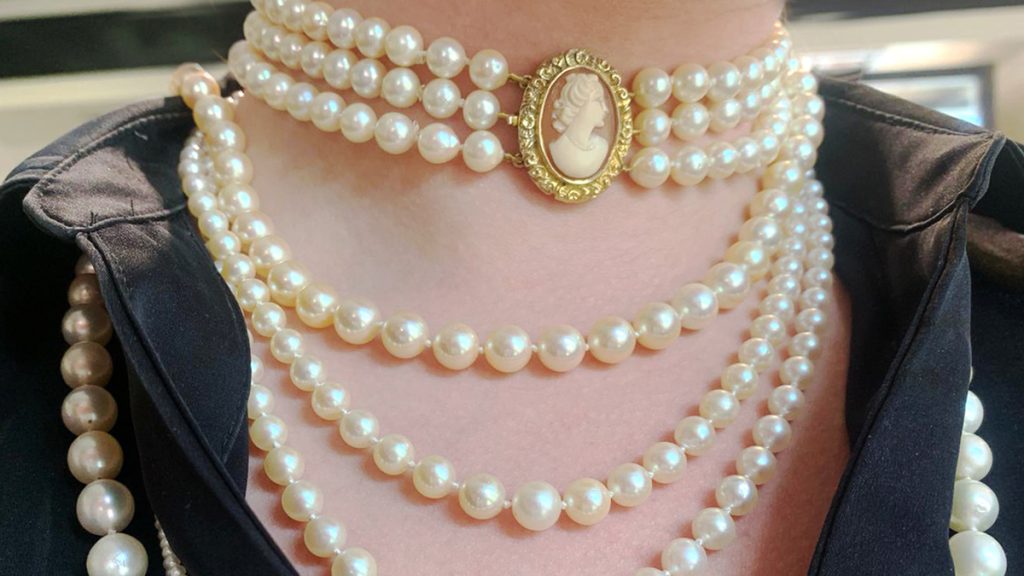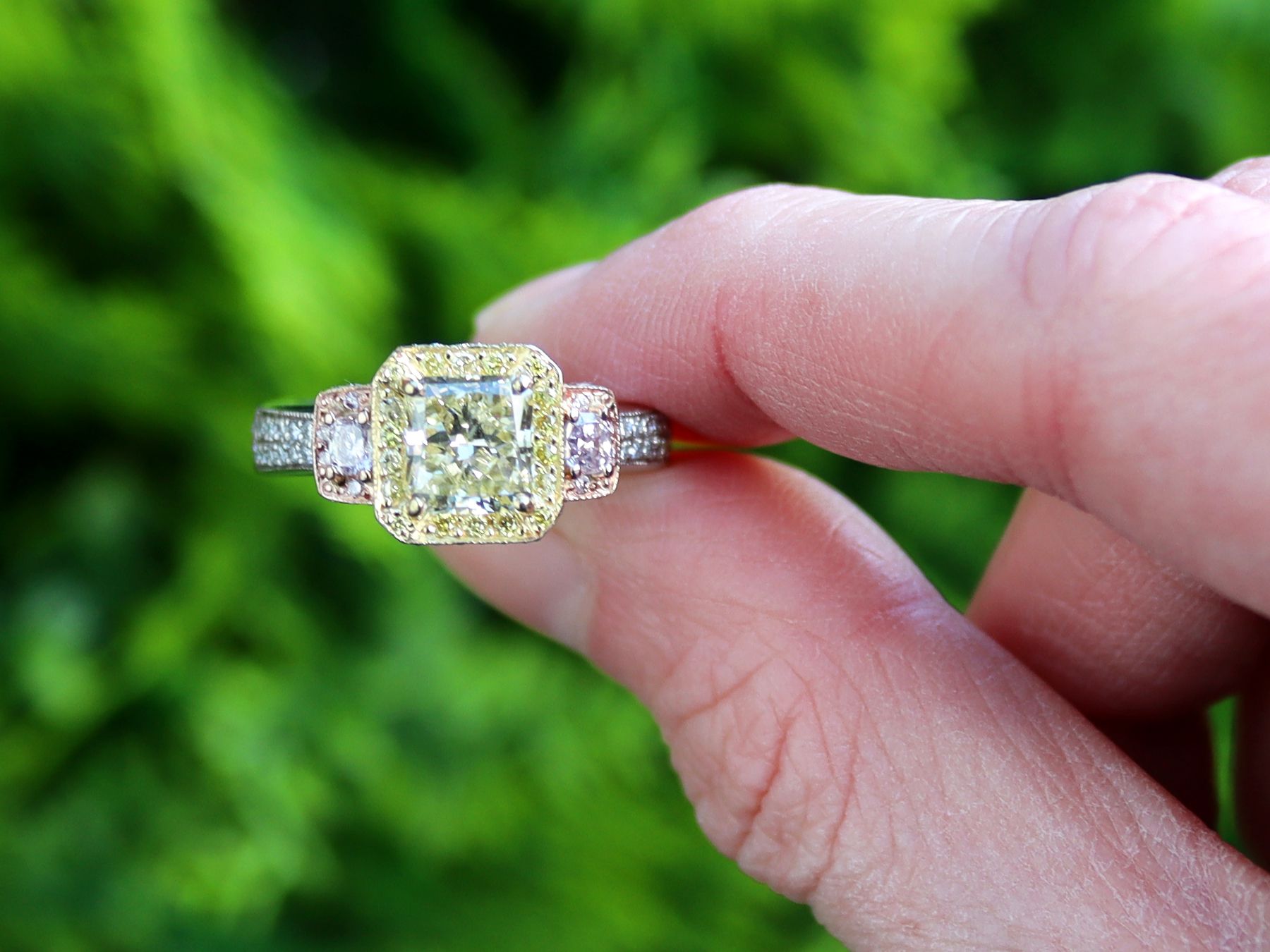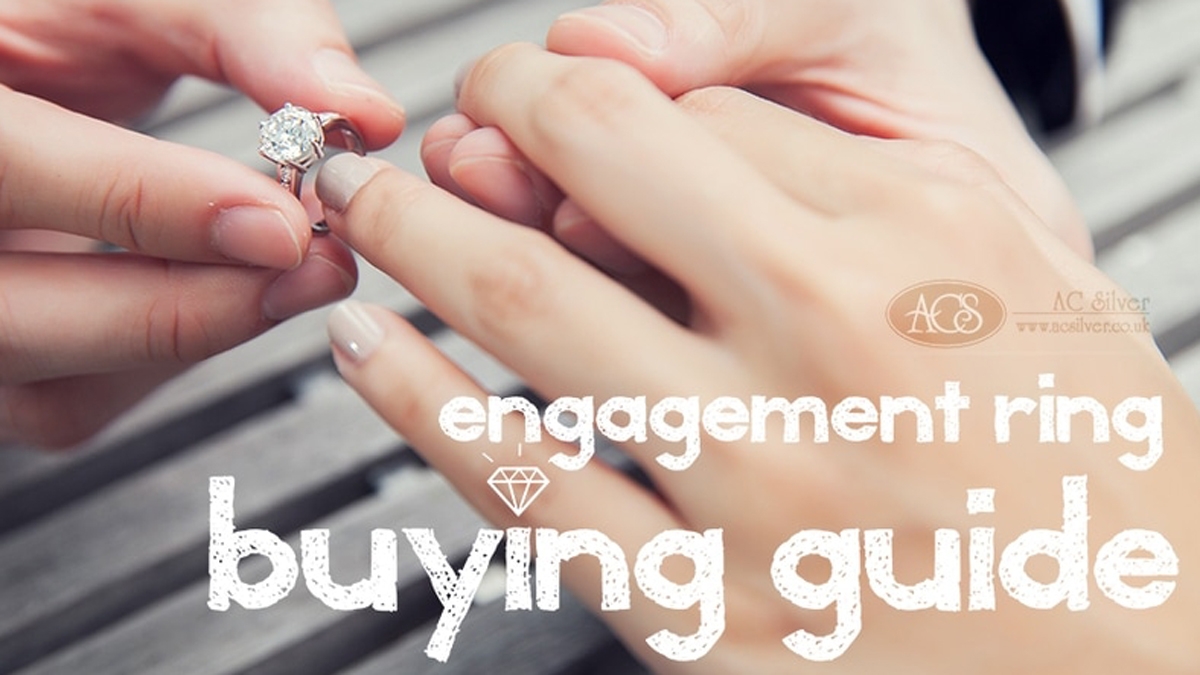Fist discovered in Asia, a pearl is formed when a foreign object becomes trapped within an oyster, mussel, or clam. The animal senses the object and as a defence mechanism coats it with layers of a shell-like substance made from aragonite and conchiolin. It usually takes 6 months to serval years to produce a natural pearl. Historians believe the pearl was discovered by accident, when humans began hunting along shore line’s looking for food.
Pearls have had such a strong impact on fashion and jewellery throughout history, cementing themselves as one of the most iconic gemstones of all time. The roots of the pearl extend as far back as humanity itself and are still relevant decade after decade. The pearl dates back as far as 2300 BC and are still worn today. So, lets take a look though the pearl fashion through the ages…
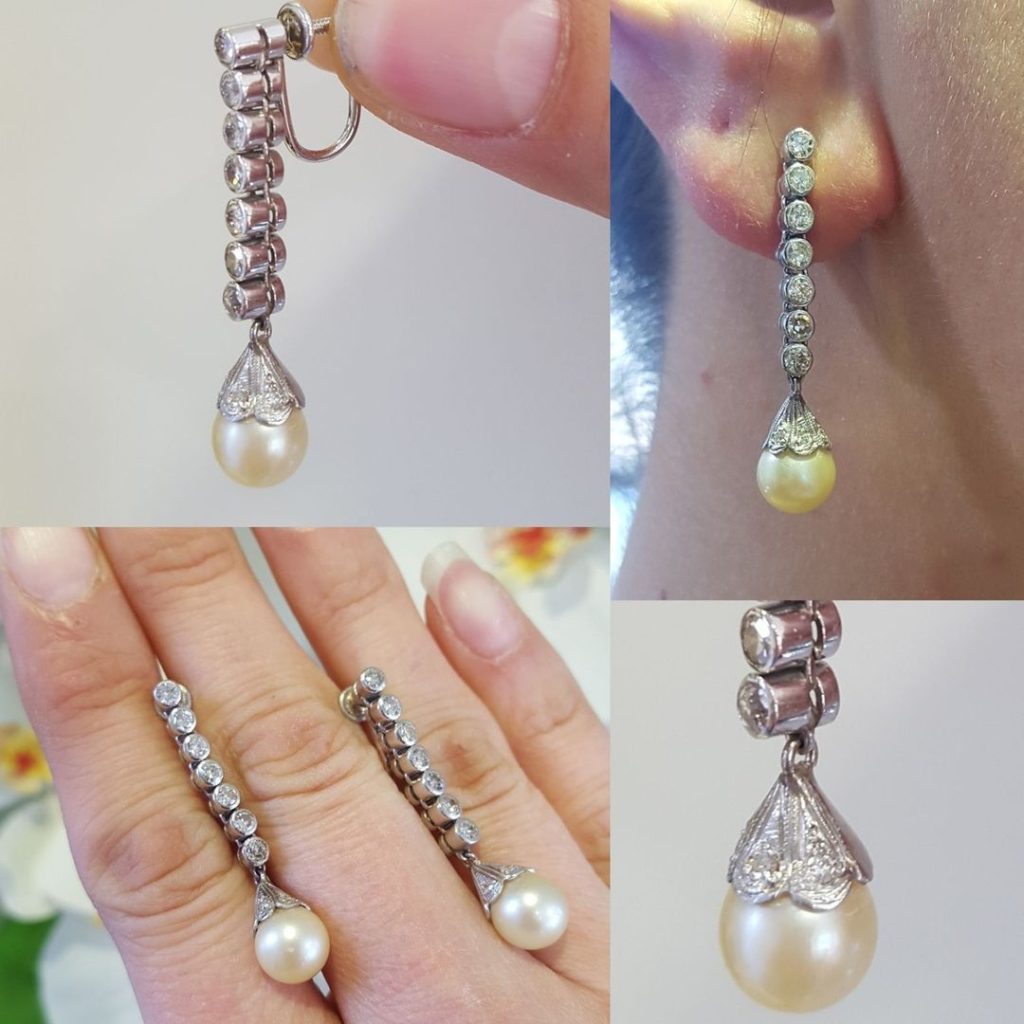
2300 BC – 420 BC
Dating back to 2300 BC, after their discovery pearls were often gifted to Chinese royalty, the unique gemstone was considered to be a symbol of purity and the ultimate status symbol. They were believed to offer protection from dangerous fire breathing dragons.
One of the first examples of pearls being worn as jewellery was in 420 BC. A sarcophagus of a Persian Princess was discovered wearing an antique pearl necklace which is now on display at the Louvre. The necklace consists of three rows of pearls strung with bronze wire, totalling to two hundred and sixteen pearls. It is believed to be the best-preserved pearl necklace from before Christ.
In ancient Rome, Julius Caesar escorted the military to the Scottish coastlines in order to acquirer the freshwater pearls which resided in that area. The pearls were cherished by ancient Roman women to an excessive degree and Julius Caesar had to invent a new law governing the number of pearls a woman could wear as he wanted to preserve their regality.
Pearls have even been associated with the Roman Goddess Venus, who is believed to have been born from the sea and is famously depicted arising from the shell of an oyster. Cleopatra, the famous Egyptian princess, was said to have a love for pearls, back in accident Egyptian times she hosted a banquette and to impress her Royal guests’ she would partake in an unusual activity involving dissolving and consuming the pearls. She did this to show of her wealth and to impress her high-class guests’.
11th – 16th Century
In the 11th Century Soldiers returned to Europe from Arabia and other foreign lands, after the crusades. Bringing with them, riches such as gold, silver, and, of course, pearls. Once again, the popularity of the pearl increased within the wealthy population during the 12th and 13th century. The pearl conveys wealth, as unlike mined gemstones, they appear from their shell ready to wear with perfect lustre, making them highly popular and represents instant fortune.

During the 15th and 16th century, Pearls were sill making an appearance with wealthy monarchs. They were worn to depict their status. Many portraits of monarchs during this time can see seen accessorised in strands of pearls. Including, antique pearl necklaces, earrings and head pieces.
Margaret of Denmark famously wore an embellished pearl head covering, which is known as the most extravagant pearl accessory in history. Anne Boleyn is also depicted wearing antique pearl necklaces and other accessories. Pearls were often associated with luck; Knights began a tradition where they would wear pearl accessories to protect them from battle.
1900’s – Today
Fashion icon Coco Chanel influenced women’s fashion and jewellery. Women experienced a sense of freedom for the first time and started dressing how they wanted, wearing their hair, skirts and dresses shorter. These stylish women were known as flappers and this was the beginning of the Art Deco aesthetic which made 1920’s jewellery famous. Pearl jewellery, especially necklaces, were highly sought after because of their polished look and sleek appearance, which fitted perfectly with the Art Deco jewellery trend.
Usually, the vintage pearl necklaces were worn in long strands, known as sautoirs and would often measure more than 30 inches and would be ornamented with a tassel. The vintage pearl necklaces were famously worn by Coco Chanel and Jackie Kennedy. However, the public could now easily access synthetic pearls which were a fraction of the price of the real deal, thanks to the industrial revolution which made the mass production of synthetic materials possible for the first time.
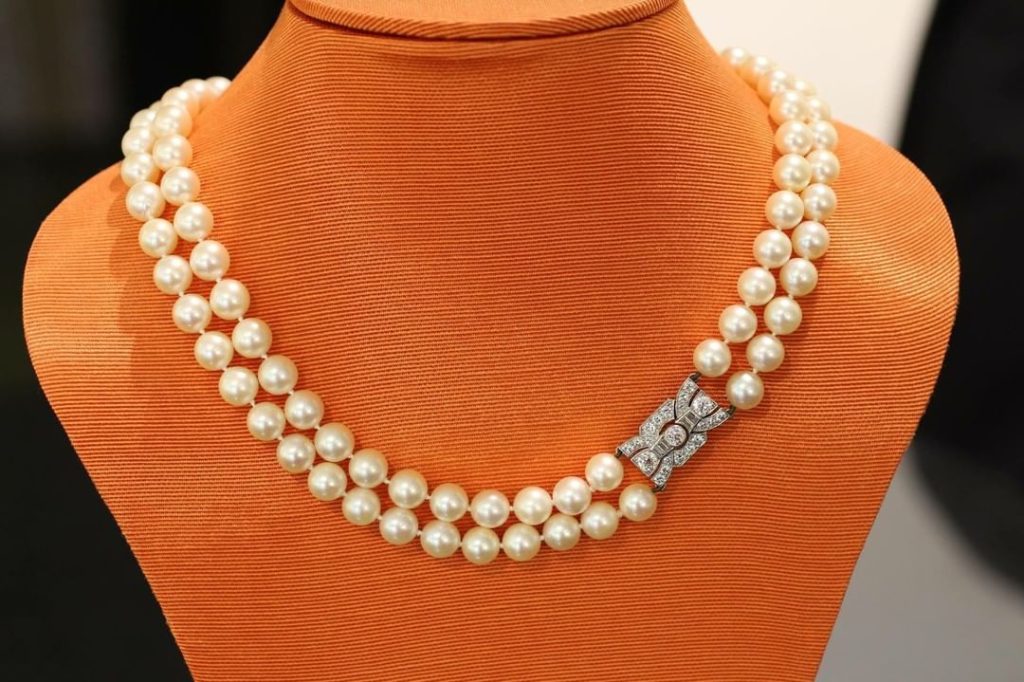
In the 1930’s the great depression had begun, so the sale of synthetic pearls was higher than ever, Allowing the much-loved pearl trend to continue. Vintage pearl necklaces became shorter and the pearl choker was born.
During the war in the 1940’s, there was a limitation on the amount of fabric that could be used to create women’s garments and jewellery. However, costume jewellery was still widely mass produced which allowed women to continuously add synthetic pearls to their outfits.
Trends began to change in the 1950’s, women favoured a more elegant and feminine look. Jewellery designs became simpler, the long-layered vintage pearl necklaces were swapped for stud pearl earrings and single strung pearl necklaces.
The swinging sixties saw the surge of super-rich celebrities with more wealth than the monarchy. Fashionistas went against fashion norms and wore large beaded jewellery, which also included pearls. Audrey Hepburn was a style icon at this time, she is famously depicted stepping out of a taxi on Fifth Avenue with a pastry in hand, wearing a vintage pearl necklace, earrings and headwear.
The 1970’s saw the beginning of the hippie culture and during this period they shunned anything fake and extravagant. Sustainable and ethically soured jewellery became popular, which meant the natural pearl became fashionable to wear again, as the pearl culturing industry created sustainable farming practices.
The 1980’s saw the most experimental decade in fashion history, it was all about bright colours and big hair. Cyndi Lauper was an 80’s icon, she donned the stereotypical bright coloured fashion, which she also accessorised with beaded pearl necklaces. Princess Diana supported a classier pearl look, she often wore long ropes of pearls, layered around her neck with the ends tided in knots.
In today’s fashion pearls still make an appearance, they are a timeless statement piece which can be worn with pretty much anything from a T-shirt and jeans to a ball gown. Since they have stood the test of time, you can bling up any outfit with antique and vintage pearl necklaces, bracelets and earrings.

